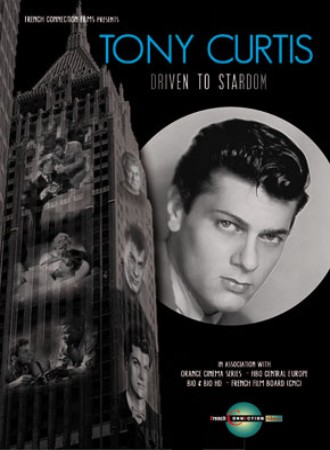
Tony Curtis: Driven to Stardom 2011
Distributed by Seventh Art Releasing, 1614 N. Fairfax Ave., Los Angeles, CA 90046; 323-845-1455
Produced by Eric Ellena
Directed by Ian Ayres
DVD, color and b&w, 96 min.
Sr. High - General Adult
Popular Culture, Film, Film History, Jewish Film
Date Entered: 12/11/2014
Reviewed by Sue F. Phelps, Washington State University, Vancouver, WAThis biography is truly a rag to riches story of a young man galvanized by acting through the many pleasurable hours he spent at the movies as a young boy. The interviews with Curtis's family, friends and co-stars; Hugh Hefner, Harry Belafonte, Debbie Reynolds, Mamie Van Doren, Piper Laurie and others along with film clips tell tale of a six decade career but the segments of Curtis reflecting on his life is most poignant. He speaks with uncanny honesty about his love affairs, including that with Marilyn Monroe, and his failed marriages as well as the hardship he experienced as a boy.
Born Bernard Schwartz on June 3, 1925 to Hungarian Jewish immigrants Helen and Emanuel Schwartz, Bernie, was bound for fame beyond what his father, an unsuccessful amateur actor could have imagined. Curtis's father was barely able to support his family as a tailor and his is mother suffered from schizophrenia. In the documentary Curtis describes how she often beat him and his brother and for the most part left Curtis responsible for his younger brother. During the depression the family became so impoverished that Tony and his brother were placed in a state institution until his father was able to provide for the children again.
The aging Curtis reflects on having been a sex symbol and a matinee idol, as well as the original movie star. Initially the studios in Hollywood considered Curtis unsuitable for leading roles but after a photographer’s publicity photos made him a heartthrob, emulated by Elvis Presley, they were forced to put Curtis on the big screen. Though there were ups and downs in the quality of the 130 films he made Curtis gained the praise and respect of his fellow actors. He was ahead of his time in matters of social justice defying racism by being photographed with Harry Belafonte and insisting on equal billing when he worked with Sidney Pointier. He also challenged gender issues by appearing in drag in Some like it Hot (1959). Curtis died in September of 2010 and, as he requested, was buried with his phone.
For film historians and fans of the movies and Tony Curtis this is an enjoyable account of the journey of one young man to stardom. The documentary was chosen by Los Angeles Jewish Film Festival as an opening film and by the Toronto Jewish Film Festival, Jerusalem Jewish Film Festival, and the Rochester Jewish Film Festival to include in their programs. It would be a good addition to a public library collection as well as academic libraries that support film history and American culture.